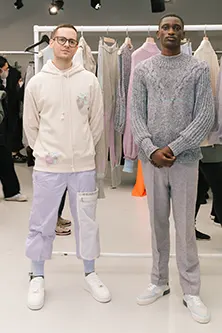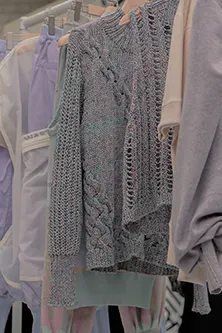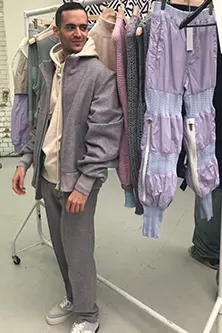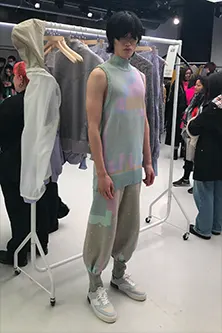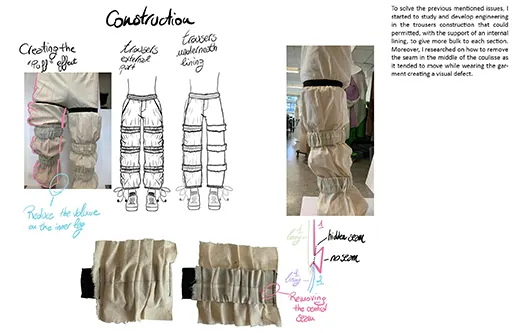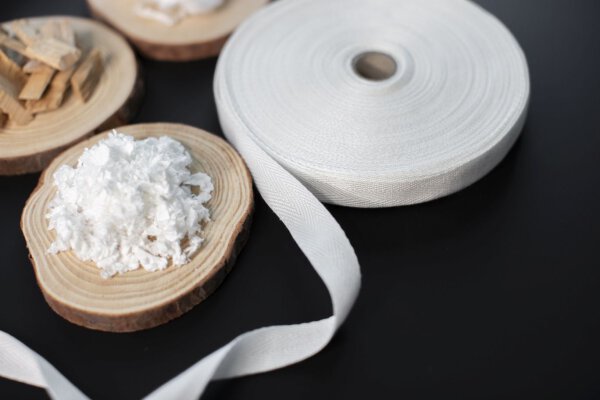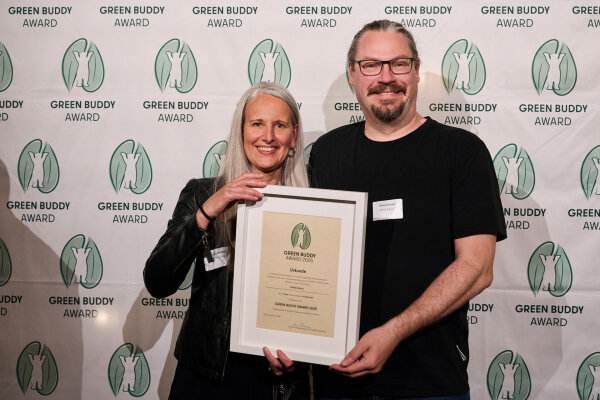Our first blog post is dedicated to a young designer who we find really great. With his intelligent and visionary final thesis, in which we were kindly allowed to accompany and support him, he has launched his own brand and has big plans beyond that. In an interview, we asked him, Frederico Badini Confalonieri, a few questions about this. Here we go!
1. Frederico, you are Italian by birth, right? The country has produced many great designers. Is fashion in the Italian blood?
Yes, I come from an Italian family, however I am born in France. I spent a lot of time between the two countries and now, with my experience in London during my Master, I can say I feel deeply European which is something really great! I am not sure if it’s in the blood, but for sure Italy has a great cultural and artistic heritage that helps a lot.
2. If I remember correctly, you've been involved in fashion since before you studied at London College of Fashion, and you've even been in the public eye. What exactly did you do?
Yes exactly, I did my Bachelor in knitwear Design at the Polytechnic University of Milan, at the time I explored more experimental approaches to knitwear and to genderless fashion. Then, I worked for a while in the yarns and textiles sector, which was really fun! However, it is with my Master that I finally launch my design project, BADINI C., which aims to keep exploring fashion and sustainability.
3. In your thesis you are dedicated to the topic of sustainable circular fashion, and you have presented a remarkable collection. What drives you?
Thank you! I think it comes naturally to me to work with a sustainable approach, as I have always loved and wished to protect Nature from when I was a child. Circular fashion is for me passionating as I believe the key is to move away from the linear production we have today (producing - consuming - discarding). Imagine a fashion industry that is self-sufficient and produces its own raw materials by recycling what is not usable anymore, that’s a dream! But we can make it come true, a step at a time.
4. What exactly is the topic of your thesis?
I built a narrative, a little bit like a story, in a parallel reality. It is conceptually talking about our reality, in particular the climate and social crisis which we see being so much interconnected. It reflects on microplastics' pollution, the impact of climate change and how it is fuelled by the powerful and richest of the world but impacts first and foremost the poorest. Metaphorically this was represented by a ‘Micro-Rain’, a huge and multicoloured rain of microfibres, falling on characters inspired by the 90s’ Gabber subculture.
5. You have received an award for it. What does this award stand for? Tell us a little bit about it.
Yes! It is the Better Lives Award organized by the Center for Sustainable Fashion and Procter&Gamble. In my project, I created a design innovation that consists in incorporating into garments, for the first time, a filter fabric to avoid microplastic pollution. I collaborated with the company that patented the Guppy Friend laundry bag, able to retain microplastics from fabrics during the washing process, and believed in my design project from the start. I have developed a range of garments that can be packed in the filter, present sealed seams or even contain other garments during the washing process and, in this way, avoid microplastic pollution while extending the garment’s life-cycle. I am very glad to the jury that selected my project as able to create “better lives” through the power of fashion and bring light to such an important topic.
I have now also been selected as a finalist for the Redress Circular Design Award, with an upcoming show in Hong Kong next September, you can follow the process on my Instagram page! @badinic.bc
6. What happens now that you have finished your studies?
I aim to continue to develop my own project and label, BADINI C., to pursue research in sustainable fashion design. In the meantime, I wish to learn more by working in other bigger luxury fashion brands, I am now at Loewe in Paris.
7. What does the term "grandchild suitability" mean to you?
I feel like it refers to the longevity of the garments. If you design a garment of high quality that will be able to last, it will maintain value and your grandchild, or someone from a vintage market, will be able to wear it and that’s the ultimate goal.
8. Do you think we can really turn the issue of fast fashion towards conscious consumption?
I think we must do it, and we have no alternatives really. The current situation is so unsustainable that we won’t be able to maintain it forever, as it is a self-destructive system. Then, how long it is going to take to shift the industry is the big question. For now the pace is too slow, and we need more policymakers tackling the issue. We are seeing some first steps in Europe and New York, but we need much more to be done, faster and worldwide, which… is a big deal. But still, nurturing optimism and action is the best thing we can all do.
9. If you could wish for something very personal, what would it be?
My greatest wish is to be able to make a tangible change in the fashion industry, even if small, and generate something that can make people happy and restore our environment.
10. What would you wish for our planet earth?
I wish the amazing energy of our planet will be able to regenerate and clean itself from the tons of pollution and degradation humans have created. I wish this could happen soon, once humanity stops its harm to the environment.
11. And what do you wish from us? Is there a product in the field of ribbons or in the broadest sense in the field of sewing accessories that you are currently missing?
First of all thank you for what you have already done which is amazing! Elastics are such an important topic and there is a need for those sustainable alternatives. It could be nice to have some advices on how to dye your elastics or maybe the possibility to order them dyed in custom colours.
The elastic you propose and synthetic-free, so don’t release microplastics and don’t have the low-longevity problem that elastane has. This is a really great aspect and I would like to use its stretch quality in other ways as well, in ribs for knitwear for example or mixed with natural fibres in woven fabrics.
Finally, I would like to find more sustainable solutions for sewing threads. In my collection I used only 100% recycled polyester sewing thread as it is very resistant and gives long-lasting seams. However, I would like to find a biodegradable alternative, more resistant than cotton, maybe from a cellulose fibre? It can seams a details but is actually important when you think about the garment recycling process.
Thank you very much, Frederico. We will take to heart and follow your wishes for us. For your future, we wish you all the best and continue to have brilliant ideas for a future fit for grandchildren.

